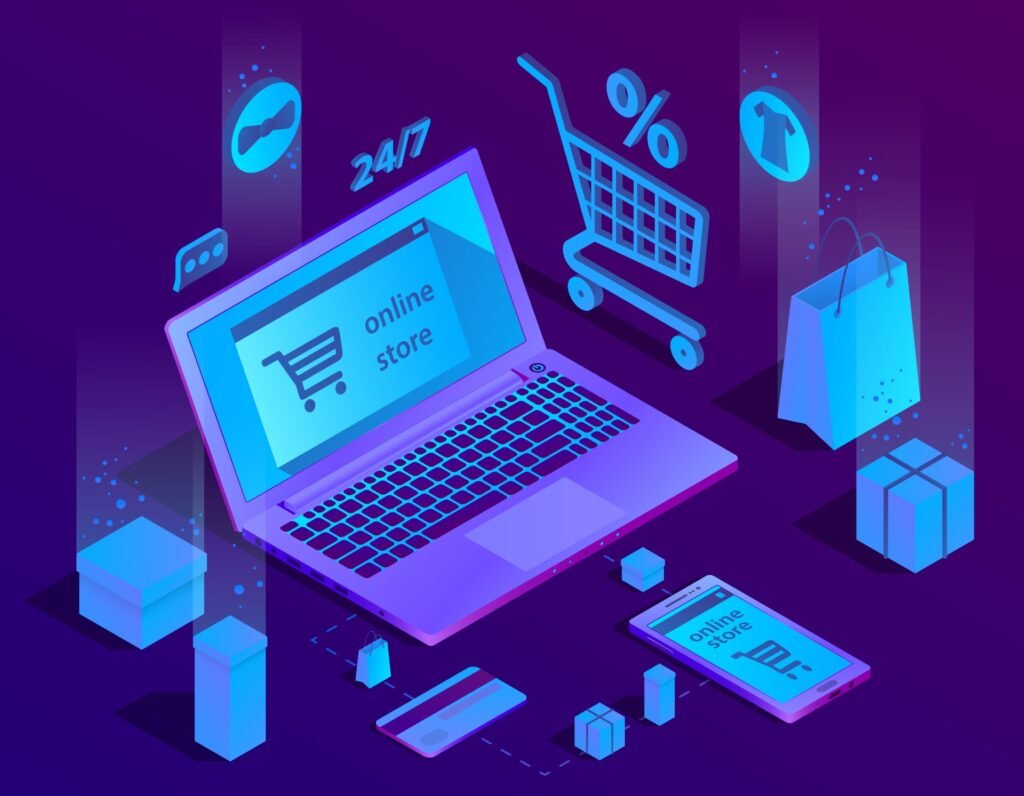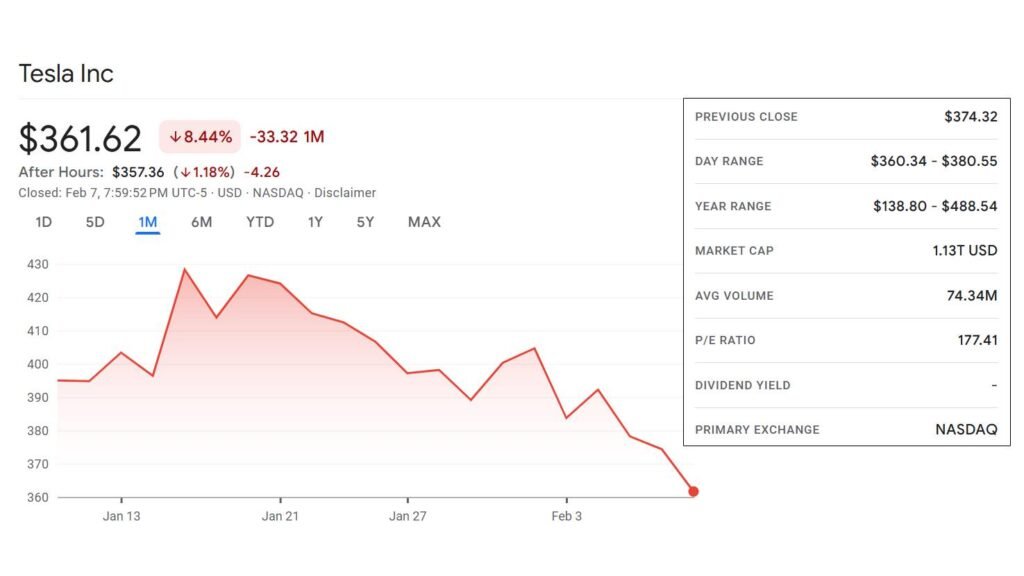|
Getting your Trinity Audio player ready...
|
The world of e-commerce is expanding at an unprecedented rate. As more consumers shift their purchasing habits online, businesses—both new and existing—are looking to establish their digital storefronts. However, launching a successful online shop goes beyond setting up a website; it requires meticulous research, strategic planning, and ongoing market adaptation.
With President Trump’s administration introducing new economic policies, entrepreneurs are navigating both opportunities and challenges in the business landscape. Trade policies, taxation, and small business incentives could impact the trajectory of online businesses. Keeping an eye on these developments can help shape a long-term strategy.
This guide will walk you through the essential steps to develop an online shop—from conducting market research to scaling your operations for long-term success.
What is an Online Shop?
An online shop, or e-commerce store, is a digital platform where businesses sell goods or services to consumers through the internet. Unlike traditional retail stores, online shops allow customers to browse, purchase, and receive products without physically visiting a store. These platforms operate through websites, mobile apps, or online marketplaces, offering businesses a broader reach and consumers more convenience. Additionally, many online businesses complement their digital storefronts with one or more physical stores to enhance customer engagement and provide a seamless omnichannel shopping experience.

Online vs. Physical Stores: Key Differences
While both online and physical stores aim to provide products to customers, their operations and customer experiences differ significantly. Online shops eliminate geographical limitations, allowing businesses to reach global audiences, whereas physical stores rely on local foot traffic. Additionally, digital storefronts require robust logistics and payment processing systems, while physical stores focus on in-person customer service and real-time inventory management. Many businesses today integrate both models, maintaining brick-and-mortar locations alongside their online presence to maximize sales and customer engagement.
Types of Online Shops
Different online shops cater to various business models and consumer needs. Below are the primary types of e-commerce stores:
Business-to-Consumer (B2C) Online Shops
B2C e-commerce refers to businesses selling products directly to individual consumers. This model is the most common in online retail, with companies like Amazon and Walmart leading the space. B2C stores focus on user-friendly interfaces, seamless checkout processes, and engaging digital marketing strategies to attract and retain customers.
Business-to-Business (B2B) Online Shops
B2B e-commerce involves transactions between businesses, such as wholesalers supplying retailers or manufacturers selling parts to distributors. These platforms typically emphasize bulk orders, negotiated pricing, and specialized customer accounts. Examples include Alibaba and industry-specific supplier portals.
Consumer-to-Consumer (C2C) Online Marketplaces
C2C platforms facilitate direct transactions between consumers. Websites like eBay, Craigslist, and Facebook Marketplace allow individuals to buy and sell items, often in a second-hand or auction format. These platforms provide users with listing tools, payment processing, and dispute resolution systems.
Subscription-Based Online Shops
Subscription e-commerce operates on recurring payments, offering customers regular deliveries of products or services. Popular in industries like beauty (Birchbox), food (HelloFresh), and streaming (Netflix), subscription models build customer loyalty and predictable revenue streams.
Dropshipping and Print-on-Demand Stores
Dropshipping and print-on-demand businesses do not hold inventory; instead, they rely on third-party suppliers to fulfill orders. Entrepreneurs focus on marketing and branding while suppliers handle production and shipping. Shopify and Printful are popular platforms enabling these business models.
Digital Product Stores
Some online shops specialize in digital goods rather than physical products. These include software, e-books, online courses, and stock photography platforms. Websites like Udemy, Adobe, and Shutterstock provide users with instant access to downloadable content and subscription-based services.
Research: Understanding the E-Commerce Landscape
Before diving into the world of e-commerce, conducting thorough research is essential. Understanding industry trends, customer behavior, and the competitive landscape can help shape a profitable online business. Entrepreneurs should explore data-driven insights, assess market demand, and identify potential challenges before launching their online shop. By leveraging research tools and market analysis, businesses can make informed decisions that drive long-term success and sustainability.
Market Trends and Consumer Behavior
The digital marketplace is evolving, with trends indicating a steady rise in online shopping across multiple industries. According to the National Retail Federation (NRF), e-commerce is growing faster than traditional retail, driven by convenience, digital marketing advancements, and improved payment security. Entrepreneurs should leverage tools like Google Trends, Statista, and industry reports to analyze customer behavior and forecast demand.
Selecting a Niche
One of the most critical steps is selecting a profitable niche. A successful niche is characterized by a clear target audience, high demand, and limited competition. Whether it’s eco-friendly products, tech accessories, or luxury fashion, researching market gaps and consumer needs is crucial.
Competitive Analysis
Understanding your competitors is key to differentiation. Use tools like SEMrush, Ahrefs, and SimilarWeb to analyze competitors’ traffic, marketing strategies, and pricing models. Identify their strengths and weaknesses to position your online shop with a unique value proposition.
Strategy: Laying a Strong Foundation
Building a strong foundation for your online shop is essential for long-term success. This phase involves defining your business objectives, structuring your operations, and ensuring financial sustainability. By developing a clear business plan, selecting the right e-commerce platform, and implementing a secure payment infrastructure, entrepreneurs can create a stable and scalable business model. Proper planning at this stage enhances operational efficiency and positions your brand competitively in the market.

Business Plan and Financial Projections
A well-structured business plan outlines your goals, revenue streams, operational costs, and marketing strategy. Key components include:
- Executive Summary: Business objectives, target market, and value proposition.
- Market Analysis: Industry trends, customer demographics, and competitive landscape.
- Operational Plan: Logistics, warehousing, and supplier management.
- Financial Plan: Revenue projections, pricing strategy, and funding sources.
Financial planning tools like QuickBooks and LivePlan can help model different scenarios and assess profitability before launch.
Choosing the Right E-Commerce Platform
Selecting an e-commerce platform is a foundational decision. Platforms like Shopify, WooCommerce, and Wix offer diverse functionalities. Consider factors like:
- Ease of use and scalability
- Transaction fees and customization options
- Integration with payment gateways and marketing tools
Payment and Security Infrastructure
A smooth and secure checkout experience builds consumer trust. Integrate widely accepted payment gateways such as PayPal, Stripe, and Square to accommodate different payment preferences. Ensure your website is SSL-certified and compliant with PCI DSS security standards to protect sensitive customer data.
Execution: Building and Marketing Your Online Shop
Executing a well-planned strategy is crucial to the success of your online shop. This phase involves building an attractive and functional website, implementing effective marketing strategies, and ensuring smooth logistics and order fulfillment. A well-structured execution plan enables businesses to attract the right audience, enhance customer experience, and drive conversions. Entrepreneurs should focus on optimizing their platforms for usability, leveraging digital marketing channels, and establishing strong customer support to build long-term brand loyalty.

Website Design and User Experience
A visually appealing and user-friendly website plays a significant role in conversion rates. Prioritize:
- Mobile optimization for seamless browsing
- High-quality product images and detailed descriptions
- Fast loading speeds and intuitive navigation
Platforms like Canva and Adobe XD help in designing an aesthetically pleasing and engaging shopping experience.
Digital Marketing and Brand Awareness
A strong digital marketing strategy drives traffic and sales. Key elements include:
- Search Engine Optimization (SEO): Optimize product pages with high-ranking keywords using tools like Moz and Google Search Console.
- Social Media Marketing: Utilize platforms like Instagram, Facebook, and TikTok to engage with your audience through organic content and paid advertisements.
- Influencer Partnerships: Collaborate with micro-influencers to boost brand credibility.
- Email Marketing: Platforms like Mailchimp and Klaviyo enable personalized customer engagement through automated email sequences.
Logistics and Order Fulfillment
Decide whether to manage inventory personally, use dropshipping, or partner with a third-party logistics (3PL) provider. Efficient supply chain management ensures timely deliveries and satisfied customers. Tools like ShipStation and EasyPost streamline shipping processes.
Customer Support and Retention
Long-term success depends on retaining customers through excellent service. Implement:
- Live chat support with Zendesk or Tidio
- Loyalty programs to incentivize repeat purchases
- Clear return and refund policies to build trust
Scaling Your Online Business
Scaling an online business requires a strategic approach that ensures financial stability, enhances operational efficiency, and drives market expansion. As your store gains momentum, leveraging data analytics, expanding your product offerings, and entering new markets become essential. Entrepreneurs must continuously refine their marketing strategies, optimize operations, and adapt to industry trends to stay competitive. By making data-driven decisions and investing in automation, businesses can enhance efficiency and maximize profitability while maintaining a strong customer-centric approach.

Analytics and Performance Tracking
Monitor your shop’s performance with tools like Google Analytics, Hotjar, and Shopify Reports. Track metrics such as:
- Conversion rates
- Customer acquisition cost (CAC)
- Average order value (AOV)
- Customer lifetime value (CLV)
Expanding Product Lines and Market Reach
As your business gains traction, consider:
- Launching new product categories based on customer feedback
- Expanding into international markets using platforms like Amazon Global Selling
- Investing in automation for order processing and customer service
Adapting to Economic Changes
With economic policies shifting under the Trump administration, staying informed on changes that impact e-commerce businesses is essential. Key areas to monitor include adjustments in taxation policies that may affect online transactions, potential tariff modifications influencing import and export costs, and evolving e-commerce regulations that shape data privacy, consumer rights, and online payment processing. Resources like the U.S. Small Business Administration (SBA) provide updates to help businesses adapt to these changes effectively.
Final Insights and Next Steps
Building a thriving online shop requires a well-researched strategy, careful planning, and ongoing innovation. Success depends on identifying the right niche, implementing a competitive business model, and consistently refining marketing and operational efforts. Entrepreneurs who leverage data-driven insights and adapt to market trends will be better positioned to achieve long-term growth and profitability.
We encourage you to share your experiences—what challenges have you encountered while launching an online shop? What strategies have worked best for you? Leave a comment below and join the conversation.
Stay connected with us for daily updates, expert insights, and actionable strategies. We will continue exploring this topic, providing case studies and industry analysis to help you navigate the dynamic world of e-commerce. From selecting the right niche to crafting an effective marketing campaign, every step contributes to long-term profitability.









